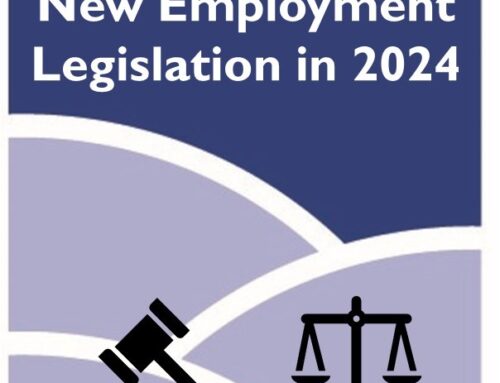While lock down continues and the furlough / JRS scheme has at least another two months to run, there are signs that businesses are slowly starting to re-open. The Government has already written to manufacturers urging them to stay open / re-open and is expected to announce detailed return to work plans in the very near future. We think it wise for employers to plan their own return to work strategy and ensure that employees are fully engaged and supportive, so we have outlined a series of steps for employers to follow:
Keeping in touch
Whether or not you have imminent plans to bring employees back, keeping in touch is very important. Employees who are off work for long periods often struggle to get back into “the swing of things” when returning to work, which is why KIT days are important during maternity leave and regular contact with long term absentees is recommended.
Employees may be concerned about the how the company is performing, how secure their job is and generally missing the connection and camaraderie of their colleagues. If you haven’t been in regular contact with staff, it’s probably a good idea to start now so they can become more engaged and involved in the return to work process. Here are some things to consider:
- Use a mixture of traditional and social media communications channels, remember they may not have access to their company emails
- Update them on what’s happening within the business, be clear and transparent with your staff, but don’t make false promises
- Encourage two-way communication so you get to learn more about their situation and general wellbeing
- How is home schooling going?
- Have they learned a new craft of skill?
- How are they getting their regular exercise?
- Are their friends and family safe and healthy?
- Have they volunteered or given others any support?
- Virtual coffee breaks, after work drinks via Zoom etc
- Collating responses and sharing among staff will help everyone feel part of the team and retain some connection with work
The mental health of your employees will naturally be a concern, engaging with colleagues may help. We have found this useful online tool from the Every Mind Matters site from the NHS which has an interactive quiz that produces a 6 step Mind Plan to help improve wellbeing. Here is the link https://www.nhs.uk/oneyou/every-mind-matters/your-mind-plan-quiz/ and here’s the Mind Plan it suggested for me:
- Relax muscles and mind
- Move more every day
- Make time to chat
- Be prepared, feel calm
- Download the feeling good app
- Take time to reflect
Returning to Work
You won’t be surprised to see us recommend that a clear and consistent process is followed for the return to work:
- Initial telephone conversation, stating return to work date and the rationale behind the return to work decision
- Followed by written confirmation detailing
- Return to work date
- Place of work
- Hours to be work
- Remuneration and how that effects / ends furlough period
- Safety measures that will be in place for the return and how the employee should adhere to them
Safety and minimising the risk of infection and spreading the virus are naturally paramount concerns, outlined below in this document are the steps recommended by Government which you should adapt and adopt to meet your specific circumstances. This should be shared with employees before they return to work, but we also suggest discussing with them what your plans are and inviting feedback and suggestions so they can feel part of the process and be more engaged / ready to come back.
Additionally, you should inform customers and suppliers of the return to work and share with them the safety measures they will be required to adhere to when visiting your premises, or what needs to be in place prior to any offsite visit by your team.
Recommended Safety Measures
Government guidance still unequivocally states that businesses and workplaces should make every possible effort to enable working from home as a first option. It goes on to say:
“Where working from home is not possible, workplaces should make every effort to comply with the social distancing guidelines.
Where the social distancing guidelines cannot be followed in full in relation to a particular activity, businesses should consider whether that activity needs to continue for the business to operate, and, if so, take all the mitigating actions possible to reduce the risk of transmission between their staff.”
Clear communication to staff (including those in managerial / supervisory roles) should make sure they fully understand the measures you have introduced and what is expected of them. It is important that supervisory staff should lead by example and help ensure compliance. These are the key measures recommended in the guidance:
- Employees should be reminded to wash their hands frequently and for 20 seconds at a time
- Catch coughs and sneezes in tissues and dispose of them appropriately
- The business should ensure that surfaces that surfaces and objects that are touched regularly are cleaned frequently using standard cleaning products
- Businesses should make sure there are places to wash hands for 20 seconds and / or provide hand sanitiser and tissues for staff, and encourage them to use them
Social distancing is also important in the workplace, the guideline is to maintain a distance of at least 2 metres apart (3 steps) between individuals wherever possible. Employers should:
- Provide clear guidance, announcements and reminders about the rules and requirement for social distancing to staff and customers
- Encourage the use of digital and remote transfers of information / documents etc where possible rather than paper format, such as using e-forms, emails and e-banking
- Where it is possible to remain 2 metres apart, use signage and / or floor markings to mark the distance, particularly in the most crowded areas (e.g. where queues form), entry points to buildings, toilets and communal break areas
- Where it is not possible to remain 2 metres apart, staff should wherever possible work side by side, or facing away from each other, rather than face to face.
- Where face-to-face contact is essential, this should be kept to 15 minutes or less wherever possible
- Keep teams of workers together (cohorting) as much as possible and keep those teams as small as possible to minimise contact with the wider workforce
There are additional guidelines for customer-facing businesses:
- Use signage to direct movement into lanes, if feasible, while maintaining a 2 metre distance
- Regulate entry so that the premises do not become overcrowded
- Use additional signage to ask customers not to enter the premises if they have symptoms
- If feasible, place plexiglass barriers at points of regular interaction as an additional element of protection for workers and customers (where customers might touch or lean against these, ensure they are cleaned and disinfected as often as is feasible in line with standard cleaning procedures)
Where it is not possible for work to be completed at home, the guidance indicates that businesses should consider shift working, or other work patterns that stagger process / working hours so that numbers are reduced and there is a greater chance of maintaining to safe (social) distance of 2 metres.
Staff canteens and rest areas
The overarching recommendations and guidance regarding hand washing, regular cleaning apply equally in this area. However, the guidance goes on to say that where possible, staff should be encouraged to bring their own food, and staff canteens and food distributors (does anywhere still have a “tea lady”?) should move to takeaway (not eat in). It goes on to state that where there are no practical alternatives, workplace canteens may remain open to provide food to staff with appropriate adjustments for social distancing and these principles should be applied:
- Canteen staff who are unwell should not be at work
- Canteen staff should wash their hands often with soap and water for at least 20 seconds before and after handling food
- Employers should consider extending and staggering meal times to avoid crowding
Face Masks
The current guidance from Public Health England is that there is very little evidence of widespread benefit from the use of face masks outside of the clinical or care settings. The Government guidance on workplace Coronavirus safety echoes this.
However, there seems to be a growing feeling within the community that face masks help reduce the spread and risk of infection which employers should be aware of. If staff are nervous about being in the workplace, then allowing or supporting the use of face masks could help their sense of security and general mental wellbeing.




